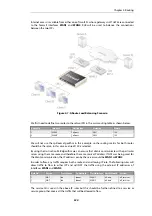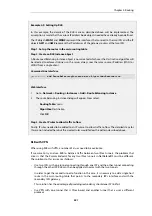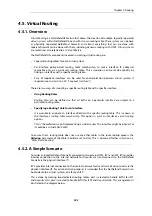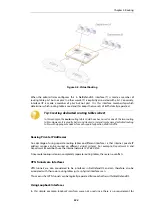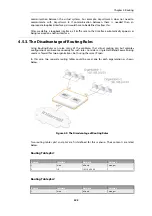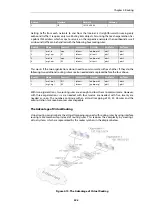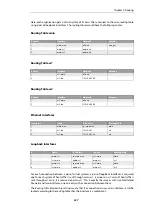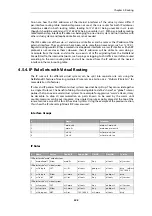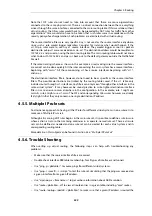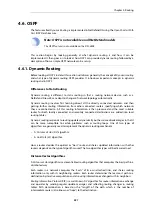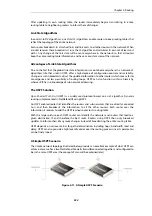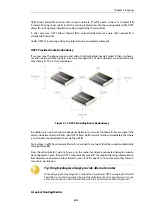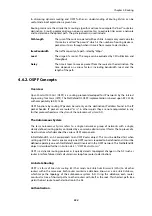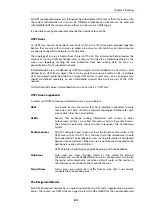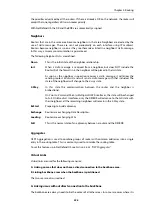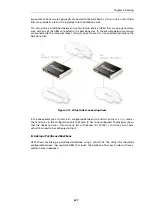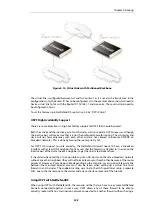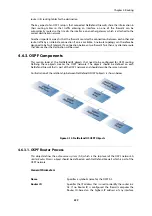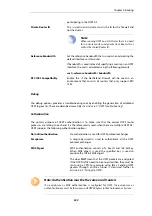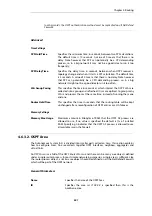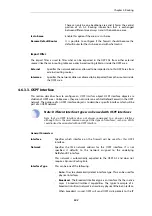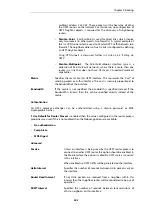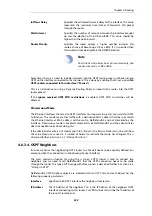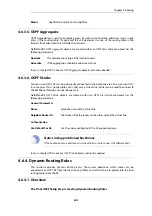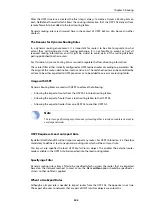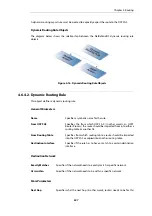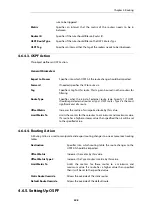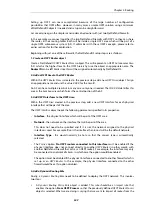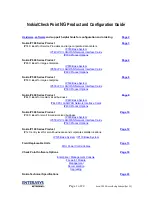
In discussing dynamic routing and OSPF further, an understanding of
Routing Metrics
can be
useful and a brief explanation is given here.
Routing metrics are the criteria that a routing algorithm will use to compute the "best" route to a
destination. A routing protocol relies on one or several metrics to evaluate links across a network
and to determine the optimal path. The principal metrics used include:
Path length
The sum of the costs associated with each link. A commonly used value for
this metric is called "hop count" which is the number of routing devices a
packet must pass through when it travels from source to destination.
Item Bandwidth
The traffic capacity of a path, rated by "Mbps".
Load
The usage of a router. The usage can be evaluated by CPU utilization and
throughput.
Delay
The time it takes to move a packet from the source to the destination. The
time depends on various factors, including bandwidth, load, and the
length of the path.
4.6.2. OSPF Concepts
Overview
Open Shortest Path First
(OSPF) is a routing protocol developed for IP networks by the
Internet
Engineering Task Force
(IETF). The NetDefendOS OSPF implementation is based upon RFC 2328,
with compatibility to RFC 1583.
OSPF functions by routing IP packets based only on the destination IP address found in the IP
packet header. IP packets are routed "as is", in other words they are not encapsulated in any
further protocol headers as they transit the
Autonomous System
(AS).
The Autonomous System
The term
Autonomous System
refers to a single network or group of networks with a single,
clearly defined routing policy controlled by a common administrator. It forms the top level of a
tree structure which describes the various OSPF components.
In NetDefendOS, an AS corresponds to an
OSPF Router
object. This must be defined first when
setting up OSPF. In most scenarios only one OSPF router is required to be defined and it must be
defined separately on each NetDefend Firewall involved in the OSPF network. This NetDefendOS
object is described further in
Section 4.6.3.1, “OSPF Router Process”
.
OSPF is a dynamic routing protocol as it quickly detects topological changes in the AS (such as
router interface failures) and calculates new loop-free routes to destinations.
Link-state Routing
OSPF is a form of
link-state routing
(LS) that sends
Link-state Advertisements
(LSAs) to all other
routers within the same area. Each router maintains a database, known as a
Link-state Database
,
which maps the topology of the autonomous system (AS). Using this database, each router
constructs a tree of shortest paths to other routers with itself as the root. This shortest-path tree
yields the best route to each destination in the AS.
Authentication.
Chapter 4: Routing
334
Summary of Contents for NetDefendOS
Page 30: ...Figure 1 3 Packet Flow Schematic Part III Chapter 1 NetDefendOS Overview 30 ...
Page 32: ...Chapter 1 NetDefendOS Overview 32 ...
Page 144: ...Chapter 2 Management and Maintenance 144 ...
Page 284: ...Chapter 3 Fundamentals 284 ...
Page 392: ...Chapter 4 Routing 392 ...
Page 419: ... Host 2001 DB8 1 MAC 00 90 12 13 14 15 5 Click OK Chapter 5 DHCP Services 419 ...
Page 420: ...Chapter 5 DHCP Services 420 ...
Page 573: ...Chapter 6 Security Mechanisms 573 ...
Page 607: ...Chapter 7 Address Translation 607 ...
Page 666: ...Chapter 8 User Authentication 666 ...
Page 775: ...Chapter 9 VPN 775 ...
Page 819: ...Chapter 10 Traffic Management 819 ...
Page 842: ...Chapter 11 High Availability 842 ...
Page 866: ...Default Enabled Chapter 13 Advanced Settings 866 ...
Page 879: ...Chapter 13 Advanced Settings 879 ...

